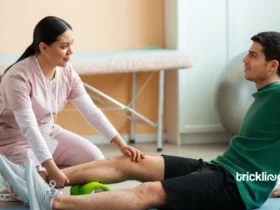Exercise can play a crucial role in addiction recovery. It helps improve physical health, boost mood, and reduce stress.
Here, I will share a few important ways to incorporate exercise into your addiction recovery plan.
1. Start Slow
If you’re new to exercise, start slow. Begin with low-impact activities like walking or stretching. Gradually increase the intensity and duration of your workouts. Starting slow helps prevent injury and allows your body to adjust to physical activity.
2. Find Activities You Enjoy
Choose exercises you enjoy to make it easier to stick with your routine. Whether it’s dancing, swimming, or hiking, finding activities you love will keep you motivated. Enjoyable workouts make exercise feel less like a chore and more like a fun part of your day.
3. Set Realistic Goals
Set realistic and achievable fitness goals. Whether it’s walking 30 minutes a day or completing a 5K run, having specific goals can keep you focused and motivated. Write down your goals and track your progress to stay on track.
4. Create a Routine
Incorporate exercise into your daily routine. Schedule workouts at the same time each day to build a habit. Consistency is key to making exercise a regular part of your life. A routine helps you stay committed and makes it easier to prioritize physical activity.
5. Join a Group or Class
Joining a fitness group or class can provide motivation and support. Group activities like yoga classes, running clubs, or team sports can make exercise more enjoyable. Being part of a community can also provide accountability and encouragement.
6. Use Exercise as a Stress Reliever
Exercise is a great way to manage stress and reduce cravings. When you feel stressed or tempted, go for a walk, run, or do a quick workout. Physical activity releases endorphins, which improve your mood and help you relax.
7. Track Your Progress
Keep track of your exercise progress. Use a journal, app, or fitness tracker to log your workouts. Tracking your progress helps you see improvements over time and stay motivated. It’s rewarding to look back and see how far you’ve come.
8. Incorporate Variety
Mix up your exercise routine to keep it interesting. Try different activities like biking, swimming, weightlifting, or Pilates. Variety prevents boredom and works for different muscle groups. It also keeps your workouts challenging and engaging.
9. Combine Exercise with Other Recovery Activities
Combine exercise with other activities that support your recovery. For example, you can meditate or practice mindfulness before or after your workout. This combination can enhance the benefits of both activities and promote overall well-being. In fact, some luxury rehab centers even incorporate mindfulness practices into their programs, recognizing the powerful connection between physical and mental healing.
10. Listen to Your Body
Pay attention to how your body feels during and after exercise. If you feel pain or discomfort, take a break or try a different activity. It’s important to exercise safely and avoid pushing yourself too hard. Listening to your body helps prevent injuries and supports long-term health.
Following these tips will help you make exercise a valuable component of your recovery journey. Stay committed to your fitness goals and enjoy the many benefits that regular physical activity can bring to your life.










